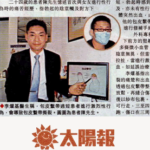
What is ganglion/ ganglion cyst?
Ganglion cysts contain transparent jelly like content and wall off by a well demarcated fibrous cyst wall, develops on a joint or tendon and appears as a protruding mass or tumor under the skin.
Ganglion cysts are benign. It is the most common soft-tissue tumor of the hand and wrist. They also occur near the shoulder, knee, ankle, and toes. Anyone can be affected by ganglion cysts, ganglion cysts occur 3 times more common in women than in men. Ganglion cysts are found in the distal interphalangeal joint and generally associated with joint degeneration, and therefore, they are most commonly seen in the elderly. Ganglion cysts are predominantly seen in young adults and are rare in children.
Cause
Ganglion cysts may be caused by:
- repetitive motion, labor work, or overuse of joints or tendons
- slight wear and tear, slight inflammation, damage, or degeneration of the joint capsule or tendon sheath
- central fluid collection turning into a jelly-like liquid, and the outside being covered by a layer of fibrous tissue
Symptoms
- Ganglion cysts are often very obvious and unsightly to the patients and others.
- Size of a ganglion cyst may change with time. It may increase in size after repeated exercise or work. It may subside after prolonged resting.
- Ganglion cysts are usually soft and 1-3 cm in diameter.
- Ganglion cysts may be persistent for a long period of time, suddenly rupture, or disappear and reappear later.
- Ganglion cysts may cause continuous pain, and the pain may be worse with joint or tendon movement.
- Ganglion cysts may be painful upon pressure and weaken tendon movement.
- Ganglion cysts may cause numbness, abnormal feelings, or tingling sensation if they are compressing a nerve in the wrist.
Diagnosis
Treatment
- Keep the joint from offending activities. Repetitive and forceful activity can cause a ganglion cyst to grow. Wearing a brace or splint to keep the joint still for a few weeks might help. But long-term use of a brace or splint can weaken nearby muscles and make the joint stiff.
- Some drugs can reduce the inflammation and swelling. Patients should consider taking these medicines.。
- Needle aspiration of ganglion cyst has a cure rate of 40%. With a minimum of three aspiration sessions, the cure rate is 85%. However, needle aspiration will make future surgery very difficult. Please consult your doctor for advice.
- Surgical excision has a high chance of cure. It can be done by old wide open incision, mini-incision or endoscopic method. Please consult your doctor for advice.
FAQs
A: No. It is a benign cystic condition related to joint and tendon. It is not malignant and not a cancer.
A: Majority of the patient will not have recurrence after surgery.
A: No. If patients feel pain, numbness or impaired activities of daily living related to their ganglion cysts, then patients should consider treatment.
















